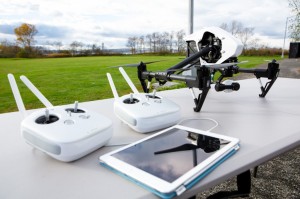New Zealand Drone Laws
New drone laws for New Zealand come into effect on the 1st August.
The main objective of the new laws is to protect members of the public from injury.
These following guidelines are taken from the Part 101 or the Remotely Piloted Aircraft System rules from the CAA:
Operation of unmanned aircraft in accordance with the rules in Part 101 is subject to the following restrictions. There are 12 key things that are required under Part 101.
You must—
- not operate an aircraft that is more than 25 kg and always ensure that it is safe to operate; and
- at all times, take all practicable steps to minimise hazards to persons, property and other aircraft (i.e. don’t do anything hazardous); and
- fly only in daylight; and
- give way to all manned aircraft; and
- be able to see the aircraft with your own eyes (e.g., not through binoculars, a monitor, or smartphone), to ensure separation from other aircraft (or use an observer to do this in certain cases); and
- not fly your aircraft higher than 120 metres (400 feet) above ground level (unless certain conditions are met); and
- have knowledge of airspace restrictions that apply in the area you want to operate; and
- not fly closer than four kilometres from any aerodrome (unless certain conditions are met); and.
- when flying in controlled airspace, obtain an air traffic control clearance issued by Airways Corporation of New Zealand;
- not fly in special-use airspace without the permission of the controlling authority of the area (e.g. military operating areas, low flying zones or restricted areas); and
- have consent from anyone you want to fly above; and
- have the consent of the property owner or person in charge of the area you want to fly above.
Pilot/operator qualifications
Part 101 does not require a pilot qualification unless the flights are going to be conducted on, or within 4 km of an aerodrome.
However, to comply with Part 101 fully, the operator needs to understand what airspace he or she will be operating in. To do this, some knowledge of aeronautical charts, and how to read them, is required. Part 101 now requires all operators to have this knowledge. It can be gained from any aviation training school, Aero Club or from a qualified, licensed or certificated pilot who is willing to provide guidance and supervise them. This is not an onerous requirement but is vital to the safety of the RPAS operation and integration with other airspace users. Useful links are given later in this advisory circular.
For Part 101 operations on or within 4 km of an aerodrome, other than a shielded operation1 conducted outside of the boundary of the aerodrome, it is expected the pilot/operator would have the following minimum knowledge and qualifications—
- knowledge of the use of aeronautical charts and airspace so that an assessment, the operation’s full compliance with Part 101 can be made; and
- a MFNZ wings badge relevant to the RPAS category being used e.g. fixed-wing, helicopter, multi-rotor; and
- if the operation requires the use of an aeronautical band radio (i.e. an operator is intending to communicate via radio with other manned aircraft operators), a pass in the flight radio telephone operators (FRTO) exam is required (refer to advisory circular AC61-3 Pilot Licences and Ratings – Private Pilot Licence).
Airworthiness
Internationally, no design or manufacturing standards currently exist for remotely piloted aircraft weighing less than 25 kg. Work is underway to develop standards, but until such time as these are recognised internationally and in New Zealand, no prescribed airworthiness standards apply to Part 101 operated aircraft.
Generally an aircraft will be ‘airworthy’ if it meets relevant design and performance standards. Because no standards are prescribed in the rules, operators will need to be satisfied that:
- their aircraft is fit for purpose for the intended use;
- is of a suitable manufacturing standard;
- is assembled, constructed and maintained in accordance with the manufacturers manual or instruction;
- it can be operated in accordance with the manufacturers manual or instruction and within any limitations;
- is checked for faults and defects before flight.
While it is not mandatory to do so, it is best practice to operate an RPAS in compliance with the operating handbooks provided by the manufacturer, if available. It could be considered hazardous if you do not (refer rule 101.13).
The manufacturer’s guidelines relating to maintenance should also be closely followed. Pre-flight and post-flight inspections contained in manufacturers’ handbooks should always be followed accurately.
Operators should also consider:
- establishing and implementing battery maintenance and testing programmes, especially for lithium polymer (LiPo) batteries2; and
- for fixed-wing and helicopter RPAS, service retirement lives should be considered based on the manufacturer’s recommendations or operating history.
This information was written on the 30th July 2015 and was correct at the time of publishing.
As of 01 August 2015 The full list of New Zealand drone laws can be downloaded directly from the CAA’s website here
If you have any questions or additional advice, please leave a comment below

